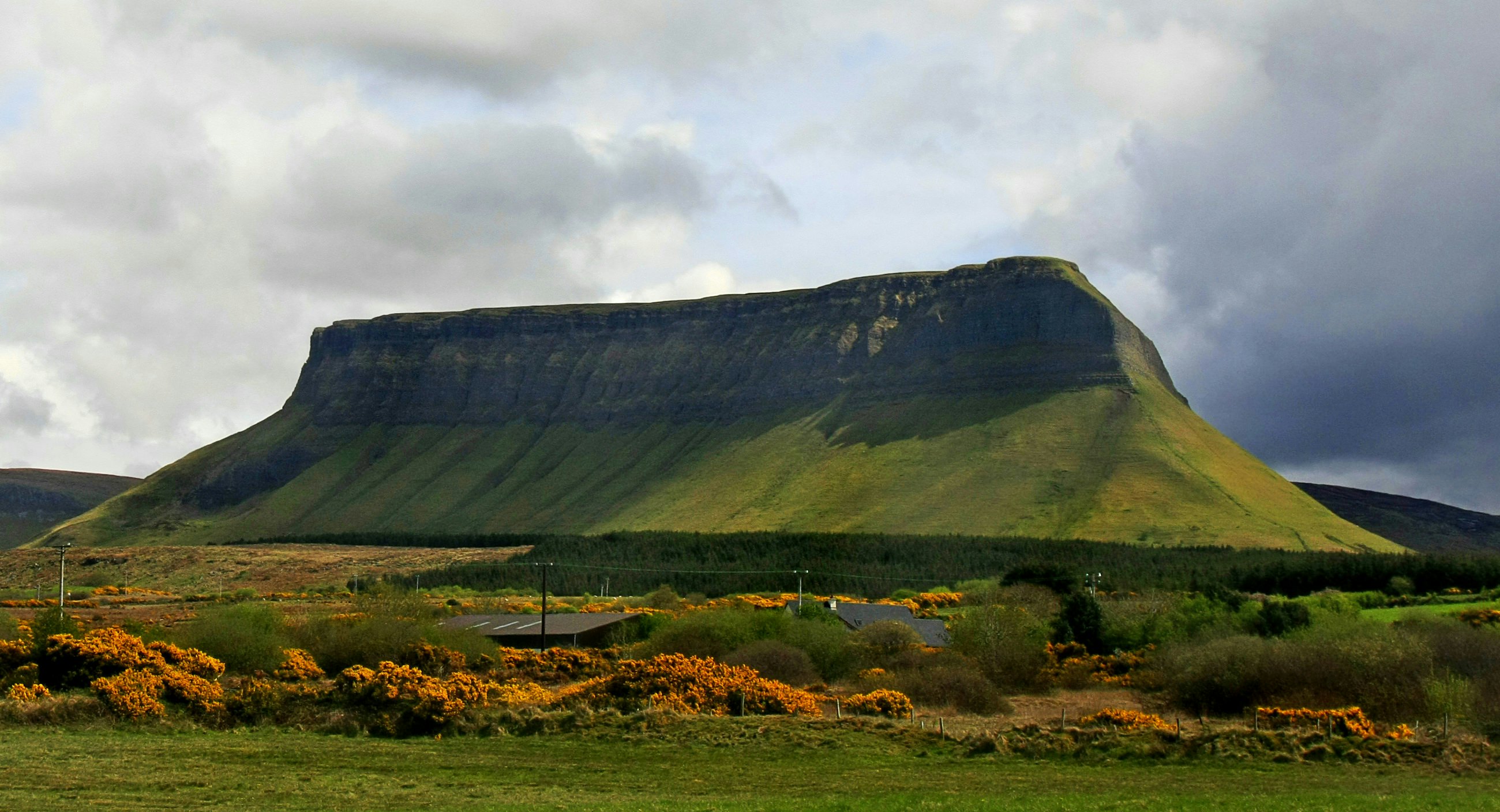
The 30 best countries, cities and regions to visit in 2025

Feb 1, 2019 • 8 min read

The Giant's Causeway is the most famous mythical site on the island of Ireland. joe daniel price / Getty Images
In many ways it’s a miracle we know anything about Ireland’s incredible and complex mythology. The tales were shared orally for hundreds of years and were only written down by medieval monks who often changed the stories, demoting the old gods to mere mortals and sometimes inserting a Christian ending to a tale.
The irony though, is that without the monks these pagan legends would have been lost in their entirety after centuries of Christianity, conquest and colonisation, and we are lucky the stories survive even in their altered form. Irish mythology can be strange, vulgar and somewhat confusing but also magical, inspiring and entertaining, and places connected with the most celebrated characters are still features of the island too. What you’ll read here is just a starting point for your travels into the landscapes of legendary Ireland.
The story of Ireland’s first, mythical inhabitants was recorded in the Lebor Gabála Érenn (the Book of Invasions) in the 11th century, blending biblical origin stories, pagan mythology and real history. In the book, the first two waves of settlers in Ireland are completely wiped out and when the third group, the Nemedians, nearly follows suit, the last 30 men split up and flee, some heading to Britain, some to Greece and some to unnamed lands in the north. Those who go to Greece return after 230 years, become known as the Fir Bolg and install themselves as High Kings.
The Nemedians who fled north spend their time acquiring supernatural abilities and return to Ireland with a new name – the Tuatha Dé Danann, meaning ‘people of the goddess Danu’. Who Danu was is lost to history, though she is presumed to have played a role in teaching these new gods and goddesses their magical powers. After sailing back to Ireland, they battle the Fir Bolg and win the right to rule the land.

The Tuatha include gods for the sea, craftsmanship and healing and goddesses of war, fertility and the seasons. The eldest and wisest of them was the Dagda, looked upon as a father figure by the Tuatha (often literally, as he fathered many of them) and associated with druids and wisdom. Admired for his strength, he’s also known for his magical staff (which could both kill and resurrect people) and a cauldron that was never empty. For 80 years he ruled from Brú na Bóinne, now recognised as one of the most incredible prehistoric sites in Europe, before being poisoned in battle.
At the Dagda's side through his early successful war efforts was the Morrígan, a three-aspect goddess of war and fate who is probably best known for having a hand in the death of Cúchulainn (more on whom later). You’ll find her on every bloody battlefield where she turns into a crow and flies overhead, inspiring warriors to brave and deadly deeds. Seek her out, if you dare, at Oweynagat in Rathcroghan, County Roscommon. Dubbed ‘Ireland’s Gate to Hell’, it is said to be an entrance to the Otherworld. At Samhain (the Celtic festival, precursor of Halloween, that marks the end of the harvest season), the Morrígan appears here, driving evil beasts out to ravage the land and bring in the winter. If you’re extra brave, the excellent visitor centre runs an especially frightening tour on Halloween itself.
Linked to the Tuatha are Ireland’s most famous heroes, including the fearsome Cúchulainn, celebrated for single-handedly defending Emain Macha, the traditional royal seat of Ulster, at the age of just 17. While the rest of the Ulster army are struck down by a curse, Cúchulainn invokes his right to single combat and cuts down Queen Medb’s army one warrior at a time for months on end. Nowadays, visitors to the remnants of Emain Macha in Navan Fort can enjoy an immersive experience learning warcraft, pottery and cooking as well as the rich history associated with the site.
After many epic deeds, Cúchulainn is eventually killed by a spear, thrown by the son of one of the many men he killed. Seeing his innards spill out, he knows his time is up but, wanting to die standing, he ties himself to a stone, facing his enemies who are too afraid to approach his corpse until a raven lands on his shoulder and they are assured he is dead. Clochafarmore, a standing stone close to Dundalk, has been traditionally seen as this place – and there’s a ring of truth to the idea: the large stone stands in a field called the Field of Slaughter, and archaeological evidence proves this was once a battle site. The dying Cúchulainn is also immortalised in Oliver Sheppard’s gorgeous bronze statue in the entrance to Dublin's GPO. Representations of the statue often appear in murals in Belfast and is an image revered by both communities: nationalists as symbol of Irish culture and resilience, and unionists as a representation of an Ulster warrior.
Cúchulainn’s most famous opponent was Queen Medb (also spelled Meadhbh, Méabh and Maeve in English), a warrior queen from Connacht. Known for a string of important husbands and lovers, she was also a key player in waging two separate wars with Ulster: once because the King of Ulster (and her former husband) raped her; another to capture a bull that would ensure her wealth was equal to that of her new husband’s. Fascinating and fearsome, she was not to be messed with and left her mark all around the province.
She ruled from the aforementioned Rathcroghan but nowadays is more associated with Sligo. Dominating the skyline there, overlooking Strandhill, is Knocknarea, a limestone hill with a huge cairn on top which you can hike to. Medb is said to be buried upright here, spear in hand and facing Ulster, ready to fight again in the event of another attack by her old enemies. As well as visiting an Irish heroine's grave, you’ll also get spectacular views across the peninsula from the cairn.
Another location where legend and landscape come together is the Giant’s Causeway. The distinctive pillars of this World Heritage Site are said to be all that remains of a pathway built by the giant Fionn mac Cumhaill (anglicised as Finn McCool) in order to fight Scottish giant Benandonner. Fionn’s escapades are detailed in the stories known as the Fenian Cycle, which tells of his band of warriors, the Fianna, as they travel around the island. His success as a hero was attributed to the fact that he accidentally ate the Salmon of Knowledge as a boy, which blessed him with all the knowledge of the world.
Fionn’s son, Oisín, is almost as famous as his father, regarded as the greatest poet of Irish mythology and credited as the narrator of all the tales from the Fenian Cycle. However, he is best known for his part in a tragic love story. In order to marry a beautiful fairy woman, he travels to Tír na nÓg, or the Celtic Otherworld. When he returns three years later, he finds that in the human world 300 years have passed and Ireland has changed beyond recognition. Before he can return to his fairy wife, he falls from his white fairy horse, instantly ages and dies. Locals have long named Oisín’s resting place as Glenasmole, part of the Dublin Mountains Way and an enjoyable hike. A recent community project saw hundreds of people bring a stone to Glenasmole to build a cairn for Oisín – you’ll see it (and possibly some wild white horses, perhaps visiting from the Otherworld) as you climb up.
The Tuatha Dé Danann ruled Ireland as High Kings for some time but, according to the Book of Invasions, were defeated in battle by the Milesians, a group of human soldiers from Iberia. The two groups agreed that they would rule Ireland together: the Milesians would rule the land, while the Tuatha would rule the Otherworld from palaces hidden inside earthen mounds, or sidhe as they are called in Irish. The Tuatha thus retreated, their powers fading somewhat, and in time became known as the Sidhe (after their new homes), the ‘good folk’ or simply ‘fairies’.

Traditionally a tall, handsome race with their own battles, interests and love lives, the Sidhe are more akin to Tolkien’s elves than the small, winged fairies that appear in animated movies. Their good looks and articulate way of speaking earned them the nickname ‘the gentry’ in the west of Ireland. In other places, they were feared and blamed for stealing children and young people and taking them to the Otherworld. It’s unclear exactly how strong this ‘fairy faith’ was, but there is tantalising evidence that in some parts of the country, particularly in rural areas, belief in them sat happily alongside Catholicism until the beginning of the 20th century (Ireland’s esteemed Nobel Laureates, WB Yeats and Samuel Beckett, believed in them), and accounts name the woods around Benbulben as one of their major residences.
If nowadays they are all but forgotten, at least the earthen mounds they inhabited (most likely ancient graves) are still to be seen across the island. There are also more than 40,000 ‘fairy forts’ – which we now know to be the remnants of circular Iron Age dwellings. Legend says bad luck or even death will befall anybody who destroys one – a huge reason why so many remained untouched over the centuries. The best example is probably Dun Aengus in Inishmore, a formidable structure overlooking the Atlantic Ocean from atop a 100 metre cliff.

Nowadays, fairy folklore in Ireland looks more like the rest of the world: small, friendly creatures who can be found in beautiful spots in nature. This may not match the traditional portrayal of them, but their newfound smaller stature comes with some benefits. Several fairy trails designed for children are now dotted around the country, most notably at Malahide Castle and the beautiful Erica’s Fairy Forest in Cavan. It turns out there are still some magical secrets out there waiting to be discovered.
Make sure you're ready for anything with travel insurance from our trusted partners.
https://shop.lonelyplanet.com/products/ireland-travel-guide-13
Plan with a local
